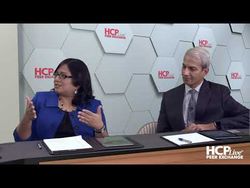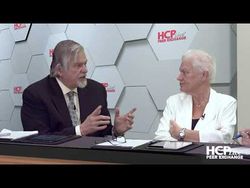Management of Beta Thalassemia - Episode 10
End Points of Phase III Study for Beta-Thalassemia
Peter L. Salgo, MD: Who’s got experience here clinically using this drug? Do you at all?
Thomas D. Coates, MD: Well, again, the size of experience, we had a lot of patients on the study, which is very few compared with the other places, but we’re in the United States. Our experience was similar to what’s been stated. It was very well tolerated. There was some bone pain, and it’s probably the main thing. Often the bone pain reduced significantly after the first 3 or 4 doses. In our practice, we have a moderate number of thalassemia-intermediate patients who we have on transfusion; therefore, they are transfusion-dependent. I mean, the first patient on this whole study was in our group—as you probably know, the very first patient.
Maria Domenica-Cappellini, MD: Yes.
Thomas D. Coates, MD: He is not off transfusion, but he probably could go off transfusions.
Peter L. Salgo, MD: Let me see if I hear what you’re telling me. This luspatercept is well tolerated, delivered subcutaneously every 3 weeks you said.
Maria Domenica-Cappellini, MD: Yeah.
Peter L. Salgo, MD: We spent the first part of this discussion saying how everybody needs to be transfused all the time to keep these hemoglobins up, to keep the erythropoiesis down in the marrow. Suddenly I’m hearing to give them luspatercept. And there are fewer transfusions, or maybe none?
Thomas D. Coates, MD: Well, that depends. Again, we have to come back. This particular patient—patients who are thalassemia intermediate who are being transfused—for example, is now 28 years old, but I’ve taken care of him since he was an infant. He’s a thalassemia intermediate whom we placed on transfusions when he was 11 because he wasn’t growing. But his hemoglobin was 8.5 g/dL. We put him on transfusions, and he had linear growth. He did much, much better. So this is not a bet 0, beta 0 patient, as Sujit is talking about. He’s a beta-plus, beta-plus or beta 0, beta-plus combo, or something like that. And so I think this group of patients is probably particularly going to benefit from this.
Peter L. Salgo, MD: The intermediate patients.
Maria Domenica-Cappellini, MD: Yeah.
Thomas D. Coates, MD: We don’t really know. The study says to do it every 3 weeks, but we’re hoping that they’ll benefit from being able to do it less often.
Maria Domenica-Cappellini, MD: I have to say that the BELIEVE study, the 1 who was approved for the registration is transfusion dependent. But there is an ongoing study in non-transfusion-dependent. We don’t know officially the data yet because it will be open next year. But it’s fun to deal with patients on this trial because they come and say, “Listen, you are blind,” because the study is blind. So we don’t know which kind of arm and placebo. And they come and say, “You are blind, I’m not. I’m feeling completely different. I’m feeling well.”
Peter L. Salgo, MD: What are the end points, the formal end points of the study?
Thomas D. Coates, MD: Which one?
Peter L. Salgo, MD: Of the one.
Maria Domenica-Cappellini, MD: The BELIEVE.
Peter L. Salgo, MD: The BELIEVE study.
Sujit Sheth, MD: The primary end point was a reduction in transfusion requirements of 33% or greater, a third or greater during a specific interval between the 13th and the 24th weeks of the study. And then the secondary end points were reduction in transfusion requirement at any later time points, 37 to 48 weeks and then 50% reduction at those same time points. And then there was another 1 that looked at a sort of rolling end point of any 12 weeks to see whether there was a reduction in transfusion requirement or not. And all the study end points were met—statistically significant and met.
Maria Domenica-Cappellini, MD: And the last point Sujit mentioned. So the evaluation at any time during treatment is underlined that not all the patients are the same. Patients have different grade of ineffective erythropoiesis, and they may respond at a different time during the first year of treatment.
Peter L. Salgo, MD: It’s an encouraging study at this point.
Maria Domenica-Cappellini, MD: Very encouraging.
Transcript edited for clarity.



